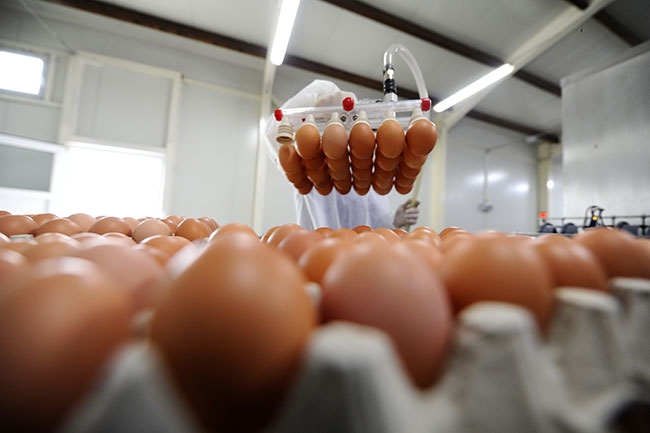
Turning the tables
By Nerine T. Joseph
Features Research Canada Poultry Research Production ResearchTable eggshell protection against invading pathogens.
 Recent studies have found that cuticle thickness and completeness of cuticle coverage are heritable traits in chicken that are strongly associated with egg resistance to bacterial penetration. Photo: Dreamstime
Recent studies have found that cuticle thickness and completeness of cuticle coverage are heritable traits in chicken that are strongly associated with egg resistance to bacterial penetration. Photo: DreamstimeAlthough the table egg industry is significant in Canada, it remains vulnerable to shifts in consumer attitudes and perceptions. Eggs are washed prior to retail sale, to remove potential pathogens from the eggshell surface. However, cases of Salmonella poisoning do occur.
According to the Public Health Agency of Canada, approximately 10,000 annual cases of Salmonella poisoning are due to the contamination of eggs that find their way into the food chain in Canada. Salmonella is the second leading foodborne illness pathogen behind Campylobacter in Canada, so it is essential that table eggs remain free of contaminants.
Eggshells are covered by thousands of pores; which can provide a route for bacterial entry. The protein-rich cuticle covers the outer surface of the eggshell and extends into these pores as an essential plug to restrict bacterial access. The washing of table eggs can remove or damage the surface cuticle layer, which is the first line of defence to restrict pathogen entry into the egg. Additionally, chicken egg cuticle coverage is uneven and its thickness variable. However, recent studies found that cuticle thickness and completeness of coverage are heritable traits in chicken that are strongly associated with egg resistance to bacterial penetration.
Professor Maxwell Hincke, from the University of Ottawa and his research team; Garima Kulshreshtha, a postdoctoral fellow, and M.Sc. candidate Nahom Berhane, have recently embarked upon a research study entitled “Eggshell cuticle plug protection against invading pathogens in the table egg.” The foundation of this study derives from preliminary studies performed within Hincke’s laboratory. He explains, “Our preliminary trials reveal that the plug formed by the cuticle layer within the eggshell pore remains firmly lodged throughout the washing process and remains present in washed commercial table eggs. However, we have previously identified several antimicrobial proteins in the chicken intact cuticle, inclusive of the major eggshell cuticle protein termed ovocalyxin-32. Interestingly, recent genetic studies identified sequence variation in the ovocalyxin-32 protein in commercial layer lines, which may affect its bioactivity. However, we don’t know whether ovocalyxin-32 variants have enhanced or different levels of cuticle resistance to microbial contamination. The composition of the cuticle is an ideal target for genetic selection programs to enhance its antimicrobial potential.”
These researchers aim to initially characterize the chemical composition and antimicrobial proteins in the cuticle plugs from table eggs. The antimicrobial properties of the cuticle plugs will then be characterized. Several mutated variants of ovocalyxin-32 will then be assessed for antimicrobial activity. The results from this study will identify the ovocalyxin-32 variant(s) with the strongest antimicrobial activity. Antimicrobial mechanisms of the eggshell that are essential to restrict pathogen entry such as Salmonella will be determined. Selective breeding to increase cuticle deposition and associated antimicrobial protection is possible.
Hincke concludes, “Selective breeding which targets the ovocalyxin-32 gene to increase a poultry line’s egg resistance to trans-shell penetration by pathogens to enhance food safety would be possible. This study will retain consumer confidence and maintain the competitive edge of the Canadian egg producing industry to ensure its continued profitability.”
Outcomes of this research study will be completed towards the end of 2017. The Poultry Industry Council and Burnbrae Farms are funding this research.
Print this page